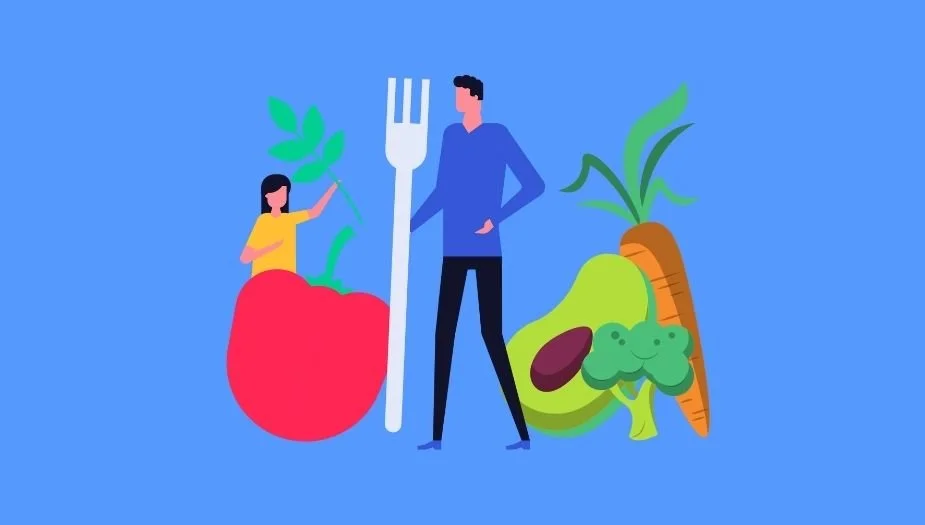Optimizing Your Kitchen for Weight Loss, Stress Recovery, and High-Performance Living
Is your kitchen your biggest ally or your greatest saboteur?
You wouldn’t try to close a million-dollar deal in a chaotic, distraction-filled office, so why are you trying to overhaul your nutrition in a kitchen that sets you up for failure? Your environment shapes your behavior, and when it comes to food, your kitchen is either your biggest ally or your greatest saboteur.
Berardi’s First Law: The Food You Have Is the Food You’ll Eat
Dr. John Berardi’s famous law states: If a food is in your house or possession, you will eventually eat it. That’s not a lack of willpower—that’s human nature. The corollary? If a healthy food is in your house, you will eventually eat it. The key to better nutrition isn’t more discipline—it’s better systems.
Step 1: The Kitchen Audit—Your Environment as a Success System
The "Traffic Light" System for Food and Drink
Not all foods are created equal, and what works for you might not work for someone else. That’s why a personalized “traffic light” approach helps you create a kitchen that aligns with your goals.
Red Light Foods:
These are your no-go foods.
Trigger foods, processed junk, anything that makes you feel sluggish or sends you on a binge spiral.
If it’s in your kitchen, it’s in your body. Get rid of it.
Yellow Light Foods:
These are situational foods.
Maybe you can handle them in moderation at a restaurant but not at home.
Maybe they’re fine in small doses but dangerous when stress levels are high.
Keep them limited and out of sight.
Green Light Foods:
These are your powerhouse choices—nutrient-dense, satisfying, and supportive of your goals.
Stock up and make them as easy to access as possible.
Your Kitchen Detox Plan - Applying the Traffic Light System
Go through your fridge, pantry, and cabinets with the traffic light system in mind:
Red Light Foods:
Toss them or donate them.
If it doesn’t support your health, it doesn’t belong in your kitchen.
Yellow Light Foods:
Store them somewhere inconvenient.
Top shelf, back of the pantry—make them a deliberate choice, not a default.
Green Light Foods:
Front and center, easy to grab.
If it takes more effort to get to the chips than to grab an apple, you’re already winning.
Step 2: Essential Equipment—Because You Can’t Cook What You Can’t Prepare
A well-equipped kitchen makes healthy eating effortless. Here’s what you need:
Blender or hand blender – Smoothies, soups, sauces—quick and easy nutrition.
Food processor – Makes chopping, mixing, and meal prep fast and simple.
Slow cooker or Instant Pot – Set it and forget it; come home to a healthy meal.
Sharp chef’s knife & cutting board – Because wrestling with a dull knife is a crime against efficiency.
Non-stick frying pan & roasting pan – For quick sautés and easy oven meals.
Storage containers – If meal prep isn’t easy to store and grab, you won’t do it.
Air fryer – Quick, crispy meals with less oil and more convenience.
Digital food scale – Portion control without the guesswork.
Measuring cups and spoons – Precision matters in cooking and meal prep.
Glass or stainless steel mixing bowls – Versatile for mixing, serving, and storing.
Sheet pans and muffin tins – Perfect for batch cooking and easy meal prep.
Spiralizer or julienne peeler – Great for making veggie noodles and increasing vegetable intake.
Food processor – Makes chopping, mixing, and meal prep fast and simple.
Slow cooker or Instant Pot – Set it and forget it; come home to a healthy meal.
Sharp chef’s knife & cutting board – Because wrestling with a dull knife is a crime against efficiency.
Non-stick frying pan & roasting pan – For quick sautés and easy oven meals.
Storage containers – If meal prep isn’t easy to store and grab, you won’t do it.
Got all of these? Great. Missing something? Time to upgrade.
Step 3: Kitchen Organization—From Chaos to High-Performance Efficiency
A cluttered kitchen slows you down. Here’s how to streamline:
Create a Meal Prep System:
Set aside time weekly to prep proteins, chop veggies, and portion meals.
If it’s ready to go, you’re less likely to grab takeout.
Stock Like a Pro:
Keep staple ingredients in stock—lean proteins, whole grains, healthy fats.
Have a system for grocery shopping that ensures you never “accidentally” end up with a cart full of processed snacks.
Make Healthy Habits Easy:
Keep water bottles in sight, store nuts and fruits on the counter, and prep veggies at eye level in the fridge.
The Bottom Line: Structure Beats Willpower
Your kitchen should make success inevitable. If you’re constantly battling your environment, you’ll lose. But when you build a kitchen that supports your nutrition and stress recovery goals, eating well stops being a struggle and starts being automatic.
So, what’s the state of your kitchen? Is it setting you up for success, or is it working against you? Time to audit, optimize, and create a space that fuels your goals.
Article References
The sources cited in the article:
Precision Nutrition (PN). “Kitchen 911: Food Prep Ritual.” PN - Kitchen 911: Food Prep Ritual
Precision Nutrition (PN). “Kitchen Setup Assessment.” PN - Kitchen Setup Assessment






